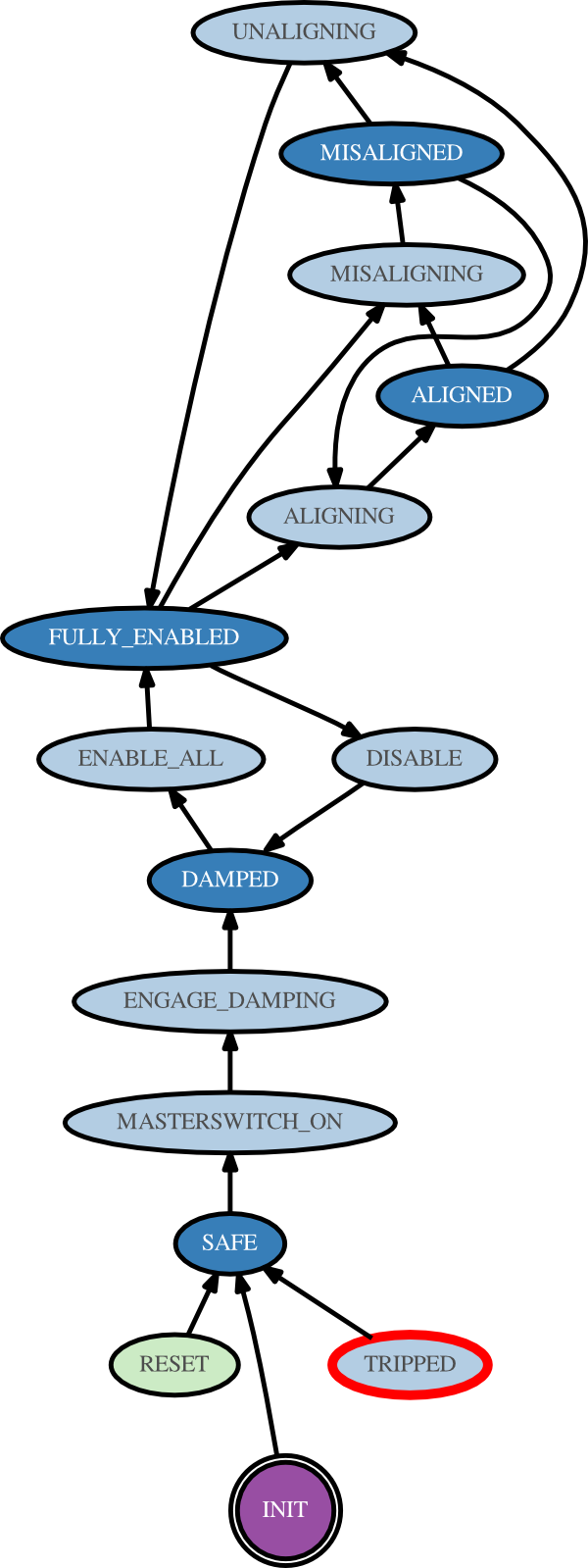Guardian Systems¶
system descriptions modules¶
Guardian Guardian Systems are defined by simple python modules, which is a file
with the .py extension. The module should be named after the
system, so for instance the system ISC_LOCK would have the name
ISC_LOCK.py.
Note
By convention all system names are upper case, with words separated by underscores.
The system module describes the state graph by defining states in the
form of GuardState classes named for the state
name, and connections between the states via an edge definitions list:
from guardian import GuardState
class SAFE(GuardState):
...
class DAMPED(GuardState):
...
edges = [
('SAFE', 'DAMPED'),
]
When guardian loads the system module it constructs the state graph, which becomes it’s internal representation of the automation logic.
state definitions¶
States are class definitions that inherit from the
GuardState base class. The name of the class is
the name of the corresponding state.
Note
By convention all state names are upper case, with words separated by underscores.
The GuardState class has two methods that are
overridden to program the state behavior:
class DAMPED(GuardState):
# main method executed once
def main(self):
...
# run method executed in a loop
def run(self):
...
The main() and run() methods can execute arbitrary
python code.
edge definitions¶
Edges are content-less connections between states that indicate which transitions between starts are allowable in the system.
State graphs are directed, which means that edges have an
orientation that points from one state to another. An edge definition
is therefore tuple with the first element being the “from”
state, and the second element being the “to” state:
edge0 = ('STATE0', 'STATE1')
Ultimately, guardian is looking for an system module attribute called edge definitions, which is a simple list of edge definitions:
edges = [
edge0,
('STATE1', 'STATE2'),
]
States may also be specified as goto,
which will cause guardian to automatically add edges to this state
from all other states:
class SAFE(GuardState):
goto = True
(Guardian also treats “goto” states differently. See the section on “Goto” states and redirection for more info.
The system state graph¶
Whe guardian loads the system module, it parses the module
to find all GuardState class definitions, as well
as the edge definitions definition. It then
